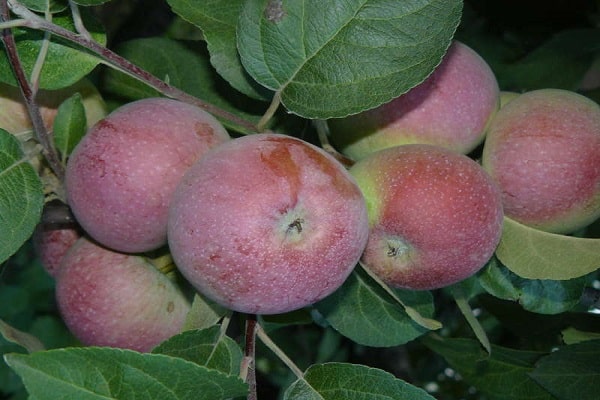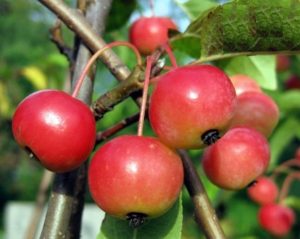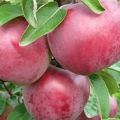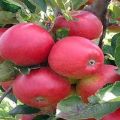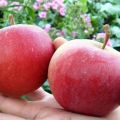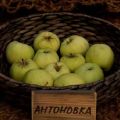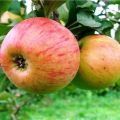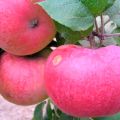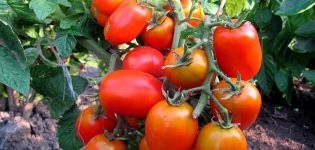Description and characteristics of Lobo apple trees, varieties, planting and care
The Lobo variety was developed by Canadian breeders using the free pollination method. A 1906 experiment to improve the Macintosh seedling was successful. To date, Lobo apple trees grow in Belarus, Ukraine, the Baltic States, and the Central zone of Russia, despite the fact that in the register of fruit trees the variety is classified as a plant in the Volga and Central Black Earth regions.
Characteristics and description of the variety
Lobo is a winter variety. Its apples ripen equally well in dry and cold summer conditions. Saplings are characterized by the cherry color of curved, flexible shoots. The leaves of the fruit tree have a bright green matte color, oval in shape, the outer side is bumpy. Depending on the rootstock used, the shape of the leaf can be slightly modified.
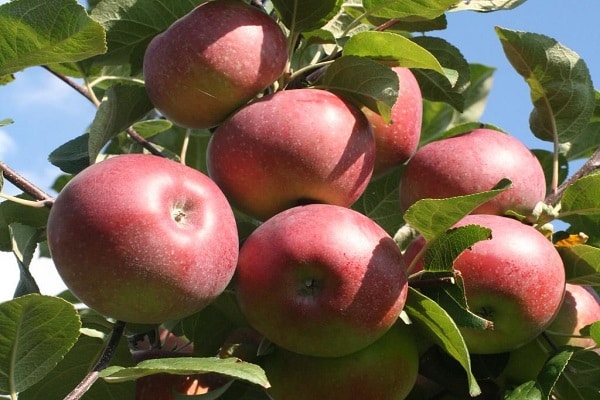
Ripening of fruits occurs on the ringlets of last year's growth. The weight of apples varies from 130 to 180 g. The shapes of apples from apple trees grown on different rootstocks may differ - conical and flattened-rounded fruits are characteristic of this variety. Varietal Lobo apples are distinguished by a small-volume core, a heart-shaped testis.
The peel of unripe apples is green, yellow. Ripe fruits are distinguished by a rich burgundy blush that covers almost the entire surface. The wax coating that makes the apple bluish does not hide the subcutaneous points.
Tasting assessment
The Lobo variety received a high tasting rating (from 4.5 to 4.8 out of 5 possible points) for its fine-grained, sour-sweet pulp, exuding a light alluring aroma of raspberry caramel.
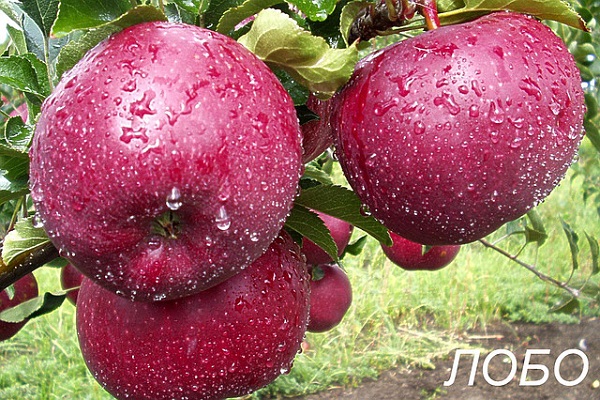
Pollinators
The flowering period of the apple tree falls in the middle - end of May, respectively, the pollinating varieties should bloom in the same period. Lobo has no particular preference for certain species of apple trees. The only unwanted neighbor is Kitayka.
Height and diameter of the crown
At the initial stage of growth, the crown has a rounded, elongated crown. As the fruit tree matures, its branches begin to deviate downward. The shape of the crown becomes like a ball flattened on top, it is not prone to thickening. The growth of branches decreases every year. To give the final shape to the crown, you can use pruning, which will make a tree with a slender, straight trunk a decoration of the garden.
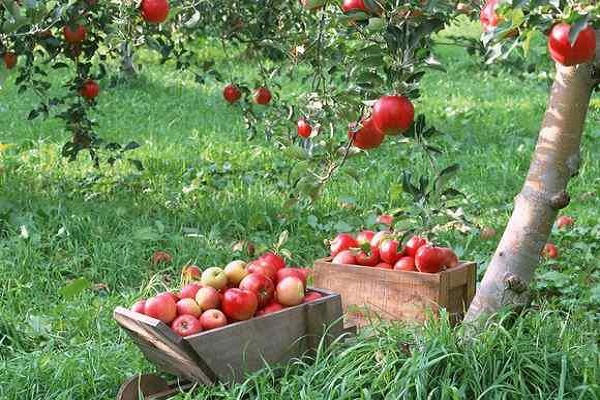
Yield
In the period of the best yield of an adult tree, up to 380 kg of fruit can be removed from it in the season. Such a harvest does not happen on a young tree, but it increases every year. The Lobo apple tree has a consistently high yield.

The beginning of fruiting
The first harvest from a fast-growing apple tree can be removed in the 3-4th season after planting. In 6-7 years, a tree grafted with an eye taken from a cultivated cutting will begin to bear fruit. Any rootstock is suitable for budding; with the help of such a grafting, the quality of apples of a wild apple tree can be improved.
Ripening terms
The ripening of fruits on the Lobo apple tree is simultaneous, falls on the end of September - beginning of October. The variety is distinguished by good keeping quality, preservation of presentation after transportation.
Winter hardiness
An apple tree hibernates without additional insulation measures without damage in climatic conditions with frosts down to -30 ° C.
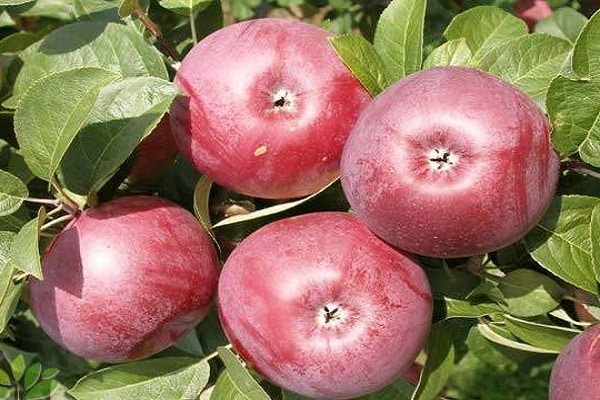
Advantages and disadvantages of Lobo apple trees
The fruit tree of the Lobo variety can withstand drought and frost, is characterized by stable yields, begins to bear fruit early, apples are not damaged during transportation.
The disadvantages of the variety include:
- susceptibility to diseases of scab and powdery mildew during prolonged rains;
- when budding for 3-4 years, the harvest time of the first crop is postponed;
- storage of apples is limited to 3 months;
- branches need props so that they do not break under the weight of the fruit.
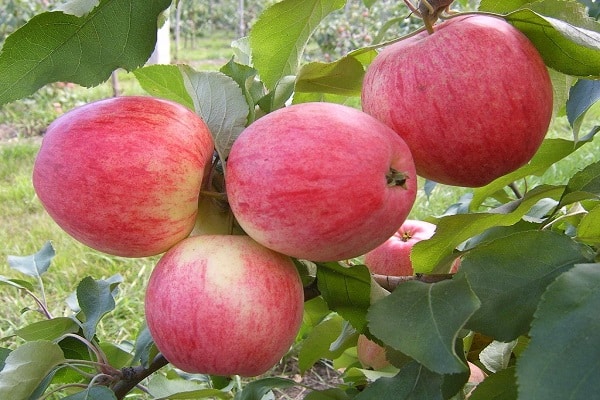
Landing
For spring planting, seedlings of 2 years ago are used. In older seedlings, survival rate is worse, they are planted in mid-late November, so their roots adapt better to a new place. A correctly chosen and prepared place for planting is the key to good harvests in the future.
What is the scheme for planting a seedling?
Seedlings of Lobo apple trees are planted in a row at intervals of 4-5 meters. When grafting apple trees or drupes to old boles, it is better to maintain a step between trees of at least 5 m both in the line and between the rows.

Basic soil requirements for planting the Lobo apple tree
The best soil for Lobo apple trees is light earth (loam) in an elevated, sunlit, sheltered from the winds. The occurrence of groundwater should not be closer than 1 m from the surface in this place, otherwise the apple tree will constantly ache from excess moisture.
In which pit to plant a seedling?
The depth of the pit for landing is 90 cm, the width is 1m. For areas in lowlands and with a close occurrence of aquifers, high-quality drainage is required; for this, gravel or medium-fraction crushed stone is poured onto the bottom of the planting hole, and broken red brick is also suitable.
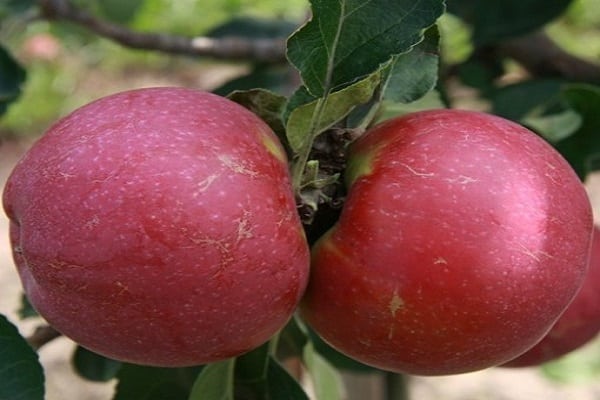
Most of the selected soil is mixed with:
- 30 liters of peat;
- 20 liters of humus;
- 1 kg of superphosphate.
With this mixture, the hole is filled 40-50 cm, simple garden soil is poured over the soil enriched with the nutrient mixture. With a strong depletion of the fertile layer, the soil is spilled with slurry.
Care
The health of the tree and its yield depend on quality care. Pruning in the case of the Lobo variety affects the shape of the crown - the aesthetic appearance of the plant. Mulching - covering an area of soil next to a tree trunk with sawdust and straw, prevents the appearance of weeds, promotes evaporation of moisture.
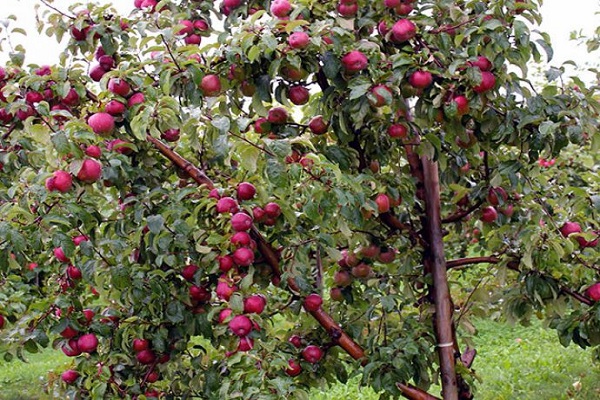
Pruning
A tree planted in spring is cut for the first time for the next season to form a crown from branches of the 1st and 2nd stage. Active crown formation is carried out in the first 4 years after transplantation.
Further, only pruning of damaged, deformed branches and a slight correction of overgrown branches is required. Given the peculiarity that the fruits are tied on last year's ringlets, an annual replacement of old shoots with new ones is required.
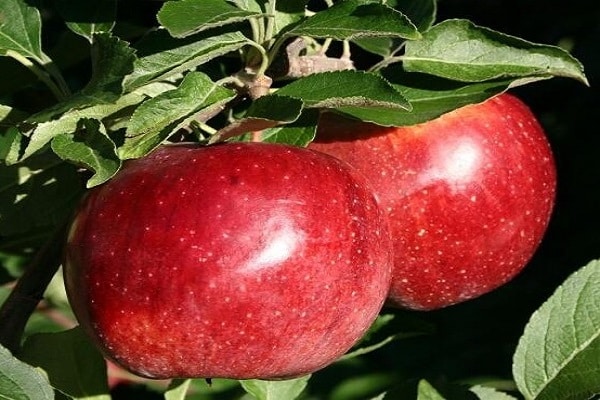
Top dressing
At the stage of ovary formation, an apple tree requires nitrogen, which gives strength for the formation and ripening of fruits. In the second half of June, it is recommended to fertilize the apple tree with urea, mineral and organic fertilizing.
Upon reaching fruiting, the tree is fertilized with urea, mineral, nitrogen and organic fertilizers. In summer, ash, compost and potash fertilizers are added to the soil. It is recommended to apply ash to the soil.
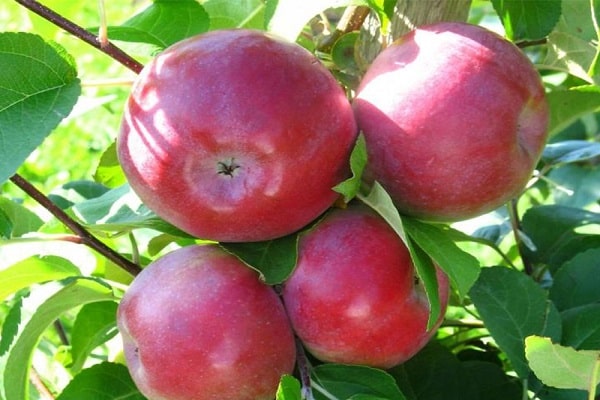
Protection against diseases and pests
The Lobo apple tree does not differ in high immunity to diseases. In the gardener's arsenal against the main enemies of the apple tree - scab and powdery mildew, there should be copper-containing prophylactic agents - "Horus" and "Skor".
Antifungal preventive measures:
- top dressing with potash and phosphorus fertilizers;
- ash to reduce soil acidity;
- colloidal sulfur treatment;
- removal of affected areas, their burning;
- annual sanitary pruning;
- timely harvest.
Systematic tree care, feeding, pruning, and whitewashing will significantly reduce the risk of disease.

Types of rootstocks
For the Lyubo variety, a winter-hardy rootstock is needed, its main characteristics are transferred to the grafted plant:
- An apple tree will grow on a dwarf rootstock, not exceeding 3 m in height.
- On a semi-dwarf rootstock, used mainly in very limited garden plots, Lobo fruiting will begin already in the 2-3rd season.
- The smallest apple trees grow on a columnar rootstock, their height is no more than 2 m. These plants do not have skeletal branches, the formation of fruits occurs on ringlets growing from the trunk.
- The height of an apple tree on a stale rootstock is the same as that of a standard one. It is more resistant to diseases, gives a high yield.
The smaller the apple tree, the lower the yield, life and fruiting periods of the plant.

Features of cultivation in some regions
In the Volga region, this apple tree, despite the arid climate, grows without requiring special attention from the gardener. For Muscovites and residents of the Leningrad Region, growing this apple variety requires strict adherence to the agrotechnical stages of planting, soil enrichment, care, and preparation of the tree for winter.
Harvesting and storage
The collection of apples for long-term storage is carried out at the stage of their technical maturity. In this case, the keeping quality and transportability of the crop will be at the highest level. The maximum shelf life of Lobo apples is 3 months from the date of harvest. After that, the fruits begin to dry out, shrivel, and their taste also suffers.
